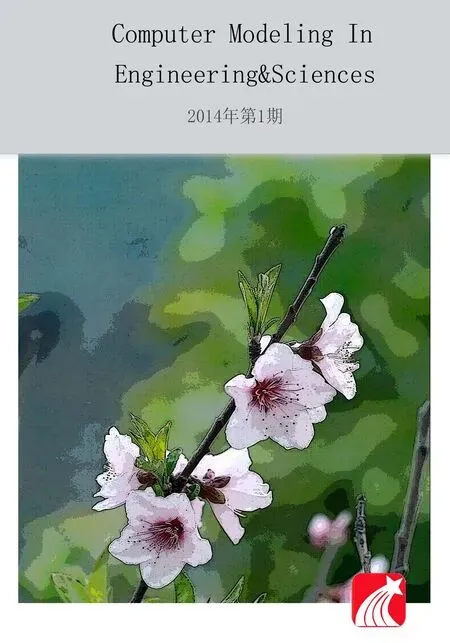Review of"The Theory of Materials Failure"by Prof.Richard M.Christensen,Stanford University Published by:Oxford University Press,2013,277 pages
Satya N.Atluri
This book,which is destined to become a classic in the discipline of the mechanics of solids,gives detailed derivations and thorough scientific evaluations of failure criteria of various classes of materials.As stated by the author,similar to the turbulent flow of fluids,failure processes in solids are dominated by various irreversible and nonlinear phenomena.Much thought has been expended by many in the centuries-long scientific quest to characterize failure processes of solid materials through mathematical criteria.In this clear and succinct narrative,the author provides a technically-illuminating examination of these criteria,rather than an all-inclusive literature-survey.From the existing vast literature on the subject of materials failure,this book focuses on theories that uphold certain mathematical and physical standards,rather than on empirical postulations which may only work in limited situations.
In the first two chapters,the author provides a critical review of the historical development of the widely-known failure theories.Following that,detailed derivations and explanations are given in Chapters 3-5 for failure criteria for macroscopically isotropic materials.A general failure criterion that can be applied to various homogenous and isotropic materials is derived in detail.This general criterion characterizes the complicated failure process of isotropic materials through only two constants T and C,the unidirectional tensile and compressive strengths respectively.Such a general criterion is theoretically tested and experimentally evaluated in Chapter 6,and applied to several examples in Chapter 7.Chapter 8 further extends the discussion of isotropic materials to the case of brittle to ductile transition.A failure number index is derived,expressed in terms of the ratio T/C,as well as the first invariant of the stress state at failure.The author provides rather detailed demonstrations of the influences of the ratio T/C,and the stress state,on the failure modes of materials,through several examples.Combined with the precise defini-tions of the yield and failure stresses in Chapter 9,the first 9 chapters of this book offer simple yet rigorous,extensive yet in-depth demonstrations and evaluations of the failure theory of isotropic materials,which is at the heart of the current book.Chapter 10 gives the author’s critical perspectives on the roles of fracture mechanics and failure criteria in assessing the failure of solids.The differences between,as well as the inherent connections among,the various length-scales of materials are discussed and demonstrated.Chapters 11-13 aim at developing failure criteria for general anisotropic composite materials,with a focus on fiber-reinforced composites.Failure theories for both macroscopically homogenous composites,as well as micromechanics-based failure theories for composites,are rigorously derived and demonstrated with examples.Chapter 14 demonstrates the use of the tools of nanomechanics for the study of failure of nanomaterials such as Graphene.Chapters 15-16 complete this book by deriving cumulative damage models and probabilistic failure theories with applications in creep,fatigue,etc.
Understanding(and thus,possibly preventing)the damage and failure of solid materials,is no less a Grand Challenge than the taming of fluid turbulence.As stated by the author,the complexity of the materials failure processes results in the lack of repeatability,and variability,in the existing experimental as well as computational data sets.In this situation,a critical in-depth examination of the mathematical and physical soundness of any failure criterion is extremely important.To summarize the long scientific quest of more than a century by many to understand the failure of materials,Prof.Christensen,with his extensive and acclaimed experience in this field,has finally presented the solid mechanics community with an excellent book,which should be valuable to both graduate students as well as established researchers.Along with the theories of elasticity and plasticity,the failure criteria presented in this book provide a complete basis for the science of solid materials and its strong growth in the future.Professor Christensen,who has been honored by ASME with both the Nadai Medal and the Timoshenko Medal,joins the ranks of luminaries such as Professors Rodney Hill and Daniel Drucker as a legend in solid mechanics,through this excellent book.
 Computers Materials&Continua2014年1期
Computers Materials&Continua2014年1期
- Computers Materials&Continua的其它文章
- Electronic Structure and Magnetic Properties of New Rare-earth Half-metallic Materials AcFe2O4 and ThFe2O4:Ab Initio Investigation
- A Novel Approach to Identify the Thermal Conductivities of a Thin Anisotropic Medium by the Boundary Element Method
- Change of Scale Strategy for the Microstructural Modelling of Polymeric Rohacell Foams
- Dynamic Instability of Rectangular Composite Plates under Parametric Excitation
